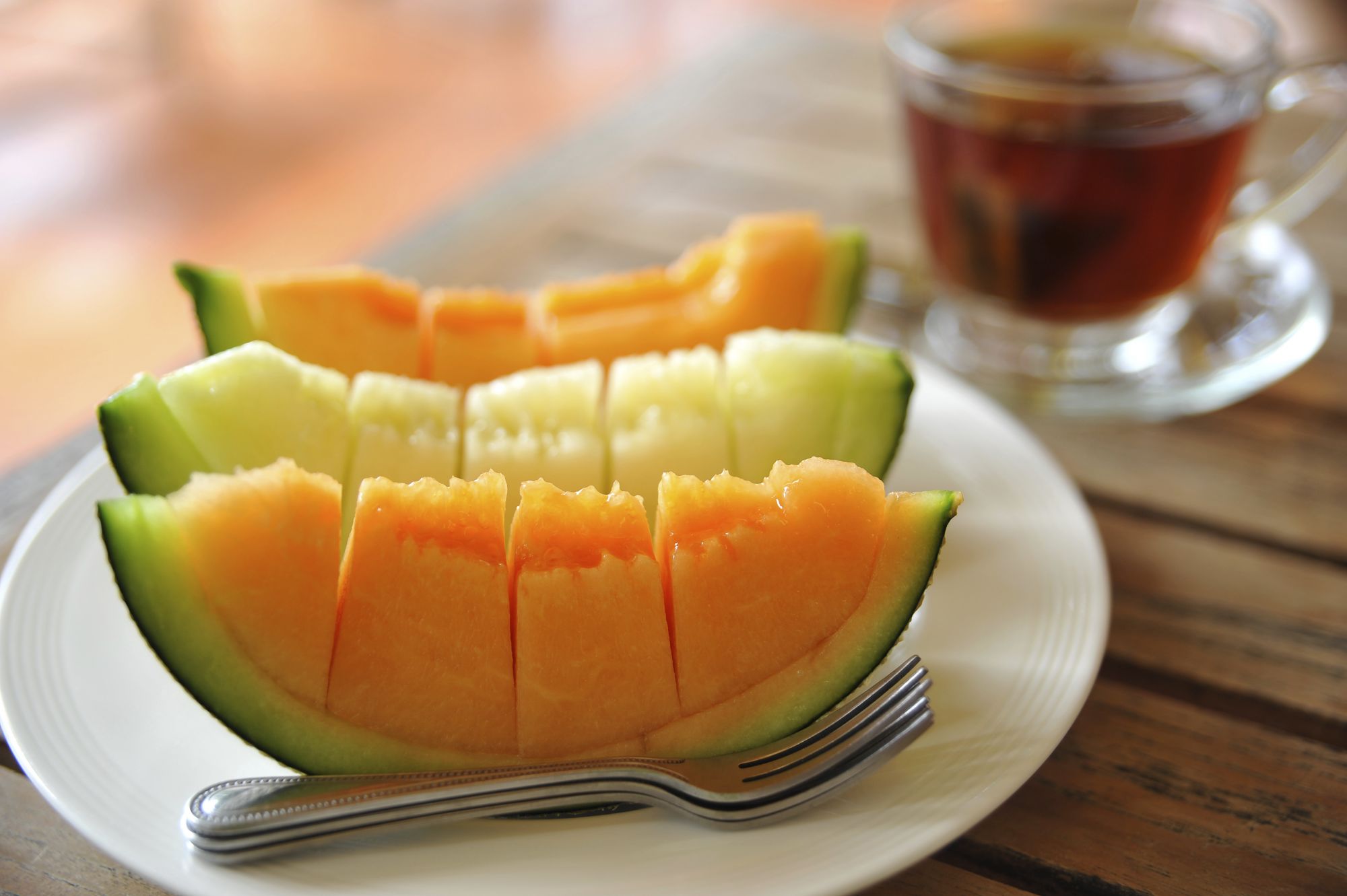All About Melons
Belonging to the family of Cucurbitaceae, melons are in season from mid May to the end of September. They’re low in calories, rich in vitamin C, water, and laxative fibers, therefore making them the perfect part of any diet. The more orange-colored the flesh, the richer the melon is in anti-oxidant carotene.
See all of our melon recipes here.

In season: from early June to late August
How to pick it: to buy the perfect melon, it needs to be firm to the touch. When you smell the bottom, it should exude a delicate, aromatic smell, without being too strong. When it smells strongly, then it means the fruit is over-ripe. Take the melon in your hand and feel its weight; the heavier it is, the sweeter it is, and hence the more likely it is to be delicious.
How to eat it: Eat your melon raw, and chilled. When frozen, it looses all of its flavor. As an appetizer, you can serve melon with Parma ham or Prosciutto, thin slices of smoked haddock, a scallop Carpaccio or any type of fresh cheese like feta or mozzarella. You can also serve melon for dessert on its own, in a fruit salad, mixed as a soup with a bit of fruit juice, or even marinated in nutmeg and scooped into balls. You can also cut smaller melons in half, scoop out the seeds and serve them as individual portions.
How to store it: Melons keep for 2-6 days in a cool place. You can also store them in the vegetable compartment of your refrigerator, but be sure to wrap it in plastic wrap or a plastic bag so that it doesn’t pass its smell on to the other foods in your fridge. You can also freeze melon balls in zip-lock bags, or even make jam with it.
We like it with: the classic combination of Parma ham and melon, try an Italian red wine like Valpolicella, a French Cotes du Rhone, a chilled rose or a white Sancerre. If you’re serving it for dessert, try a Pinot or a Port.
More steaming articles
Chef Tips and Tricks
Do you put the pasta in without waiting for the water to boil? Add oil? Forget the salt?


 All About Pork
All About Pork
 All About Peaches
All About Peaches
Comment on this article